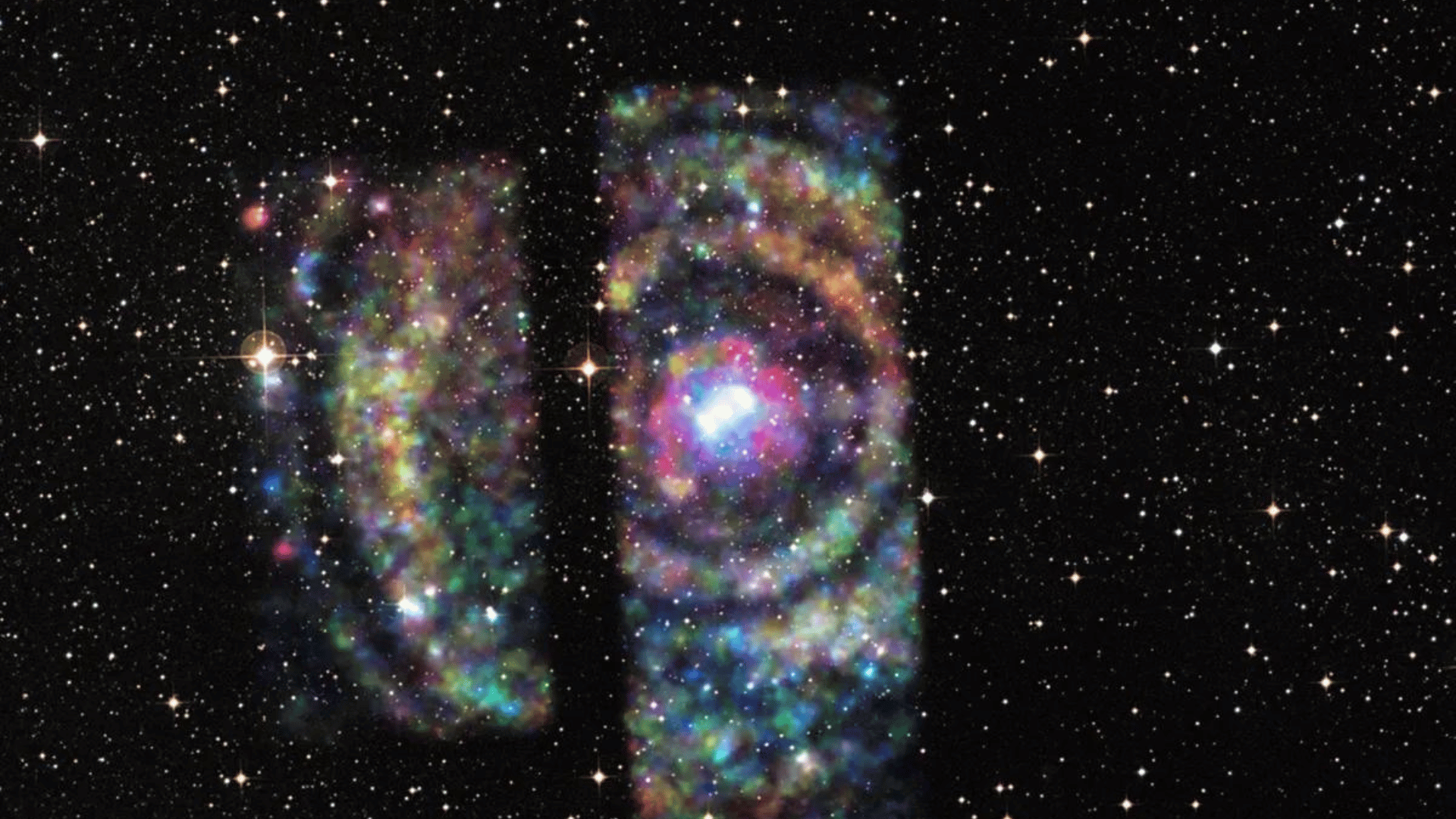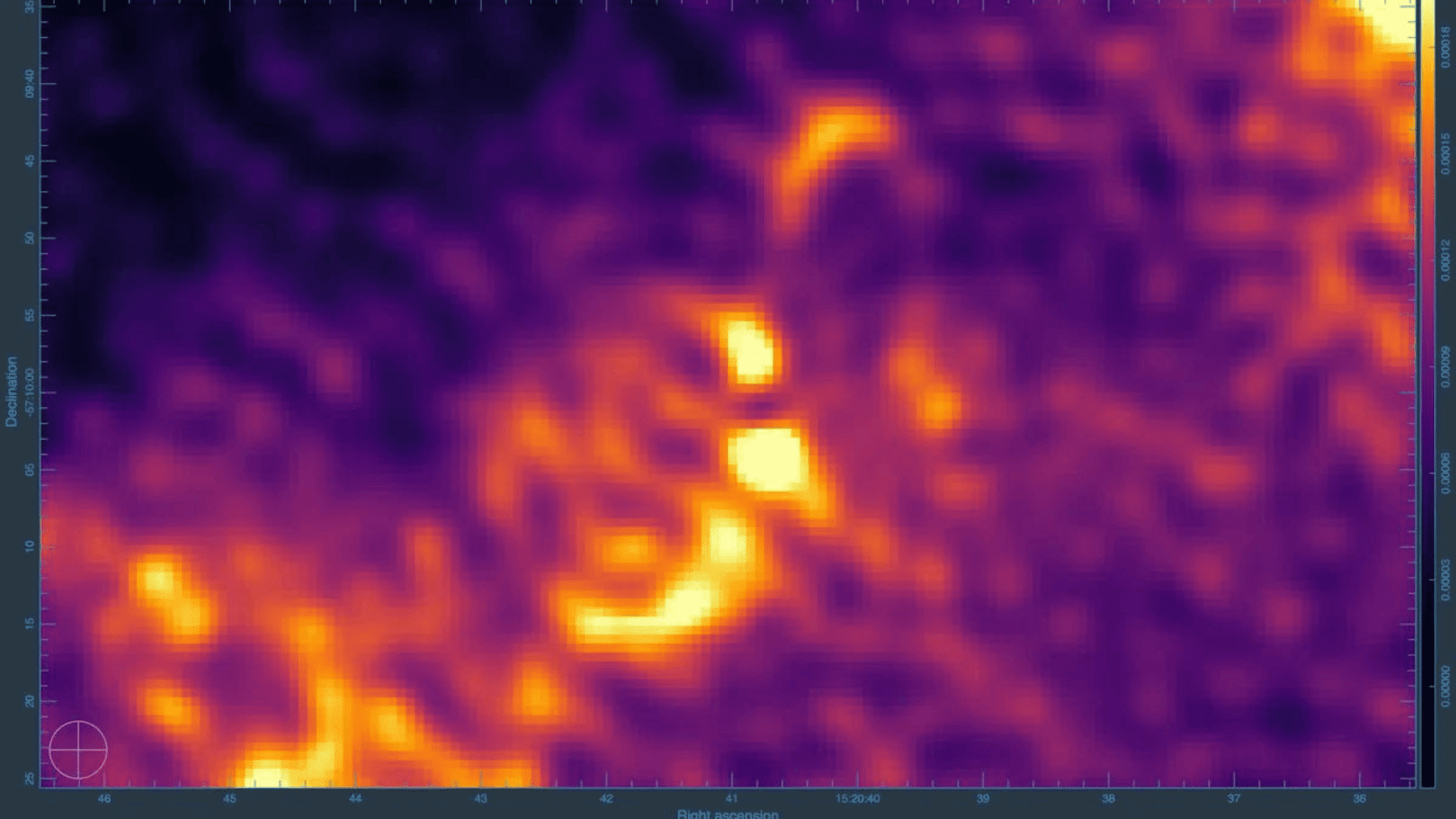For the first time, astronomers have spotted a neutron star with a jet changing directions. The jet is coming from the object Circinus X-1, a binary system comprising a neutron star orbited by a companion star. Researchers have likened the jet to a gardener’s sprinkler.

The neutron star, or extremely dense remains of a star going supernova, steals material from the companion star. Some of this material is pushed away from the system through powerful jets. These jets are typically found around black holes, but Circinus X-1 was also the first neutron star seen to have these jets in 2007.
Researchers have now observed that an interaction between the rotating star and the disk of material creates a procession, changing the direction of the neutron star and its jet. The MeerKAT telescope in South Africa took the observations.
“[The research] is really exciting because Circinus X-1 is such a well-studied source in our field, but it still remains such a puzzle even after 50 years of people looking at it,” Fraser Cowie, from the University of Oxford, who presented the new research, told IFLScience. “Now we have managed, with our new observations, to shed a bit more light on why it is so puzzling and see even more features. We are starting to link the various puzzling things together in a more unified picture.”

Additionally, the accretion of material onto the neutron star is an energetic process as neutron stars are extremely dense. As material falls onto these dense objects, it can release large amounts of energy, and some will push away part of the material and into the jet.
Moving at velocities comparable to the speed of light, the jet slammed into the material surrounding this binary system, creating shockwaves and termination shocks. This is the first time moving termination shocks have been observed around an X-ray binary.
“We are still taking observations with MeerKAT every week. We can do two things with that. We can stack all the images together and look for even fainter new structures. Or we can start to look at how the source is changing with time,” Cowie told IFLScience about the current work.







